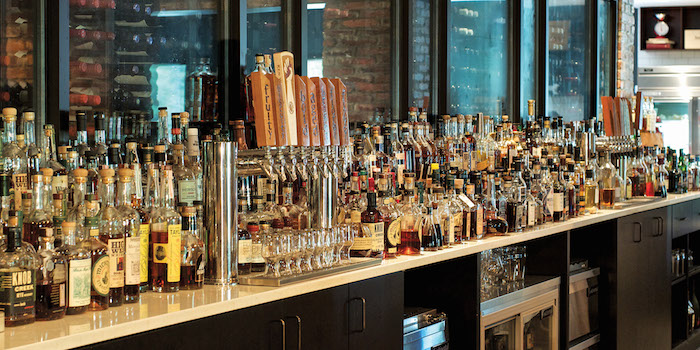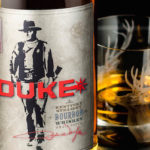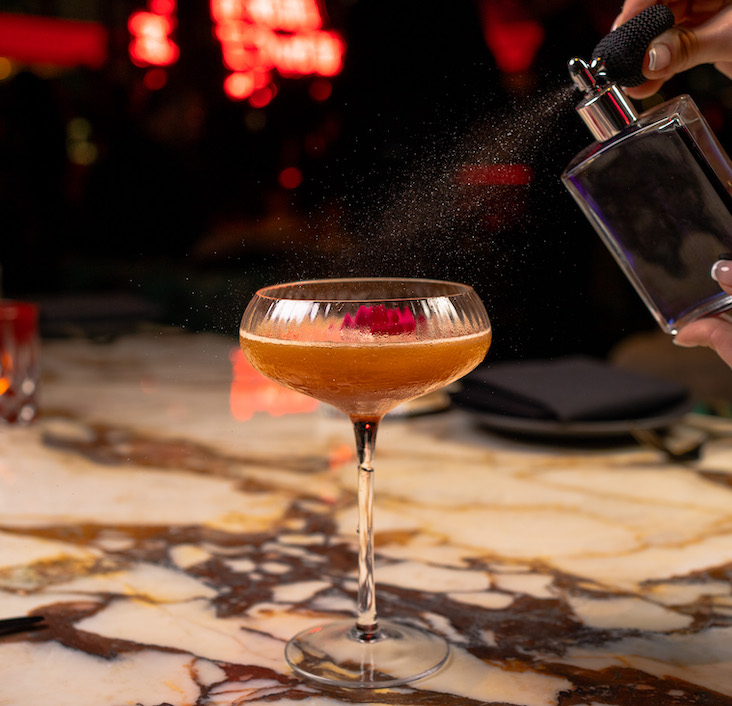Great Scotch
Rundle says Molly MacPherson’s owners Daniel Ploutier and Deborah Boulanger allow him great leeway to seek out rare bottlings, such as the Glenmorangie 21 year old Elegant and the Balblair 1978, which took months to locate. With many rare finds, MacPherson’s has established itself as a single malt Scotch destination.
Seven Scotch flights are always available from a Starter Flight (an introduction to all five regions) to a Finely Aged Flight (everything over 18 years old). Other flights focus on one particular region.
Unlike many operations, MacPherson’s carries numerous vatted malts, which Rundle says are interesting to customers who know their regional or flavor profile preferences but want something new. Big Peat, a blend of numerous Islays, is a popular over-the-top selection, but others geared to the sweeter, lighter style also do well.
At Brandy Library, American whiskey is almost as popular these days, but Scotch still rules. Desoblin says that the current trend toward no-age statements is losing steam with his customers, and sherry-influenced malts are resurging.
“I thought a few years ago there was a growing understanding that it’s not all about sherry, and you can get great complexity from other styles as well, but the pendulum may be swinging back,” he notes.
Brandy Library is home to some of the most expensive and rare brown spirits available. Looking to appeal to younger consumers, Desoblin opened a second operation, Cooper & Oak, last year on New York’s Lower East Side.
The small, library-like set-up boasts walls lined with deconstructed bourbon barrels offering 1-oz. and 2-oz. pours of expensive whiskies for neophyte explorers. Desoblin has found the alternate portions appeal to those with less to spend.

Seven Grand whiskey bars, with locations in Los Angeles and San Diego, has trouble keeping some of the higher-end Irish brands in stock.
Oh Canada!
Few of the new whisky enthusiasts favor Canada’s enormous output, ironic given that much of the popular rye sold today originated in Canada. Perhaps it’s due to the way the whiskey from the country has been long been promoted as smooth, unintimidating and easy to drink.
Hurst, for one, thinks that’s too bad. “We don’t have as much of a Canadian section as I’d like—the quality for the price is outrageous, but it’s hard to get people interested,” he says.
Says Desoblin: “The people who don’t mind spending money, they are still rather closed to the idea of Canadian whisky. It’s a shame, because they have wonderful things, although distribution isn’t great on the more fancy releases, but we get what we can.”
The consumer perception that Canadian is inferior is strong, he says, although like Hurst, Desoblin finds the better brands quite exciting.
Hurst includes whiskies “from wherever we can find a good product,” so brands from India, Taiwan, Tasmania and a 100% rye from The Netherlands are on his list. Seven Grand includes Welsh, Taiwanese, English, Australian, French and English whiskies when they are available.
Kavilan, the Taiwanese whiskey, has been swept up in the craze for Asian whiskey. The major Indian brand imported here, Amrut, gets good reviews from whiskey sellers, but the market has yet to grow.
“People are becoming so experienced that they want to go outside the box and try something they have never heard of all the time,” Hurst says. “We brought [English whisky] on because we loved it, and it seemed a natural fit on the menu.” Now, like other rare finds, he’s out of stock. “It’s crazy how many whiskies that we had to work really hard to get people educated on and give it a shot now sell themselves,” he notes.
To find a better way to manage its whiskey surge, Seven Grand built a second bar in the back. Called Bar Jackalope, it’s a sort of library where only whiskey is sold and offered in small flight portions.
Many of the most heavily allocated items are exclusively offered at Bar Jackalope to allow aficionados to get a chance to sip in a more controlled and quiet atmosphere. Three price tiers and no set flight menu means bartenders and hosts get to chat with guests to create interesting combinations.








This truly answered my problem, thanks!